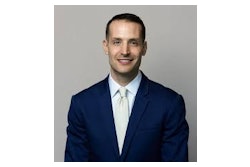Twenty-nine years ago when I started working in this field, I knew little and had no exposure to the underpinnings of this difficult compensatory process called affirmative action. I sought friends who were working in the field and began a process of acquiring all the knowledge I could about the laws and what they were intended to do. An aggressive nature, the use of trial and error and a real desire to make a difference in the field of higher education kept me motivated to change the profile of an institution.
As an affirmative action officer, you are a change agent who is fighting every day to make the institution a better place. In the course of carrying out the mandate of affirmative action, there are overt attacks on one’s creditability and integrity. There are minefields and potholes out there — some you will see and others you won’t until it’s too late.
If you are successful in carrying out your affirmative action role, they will eventually come for you. Coming for you could mean phasing out your position, changing your reporting structure and finally reassigning and/or terminating your position.
I would say to anyone who is considering this field, it is difficult, and in all probability you have not actually been trained to do this type of work. Be prepared to learn as you go and connect with others who are willing to share their experiences. My own entry into this field came when I was already holding down a job at another college. My charge was to put together the first affirmative action plan for this other institution, and I spent many hours reviewing and learning the laws that govern this field. I completed the affirmative action plan but resigned from the position shortly thereafter because the institution was interested only in window-dressing and not in changing the profile of the faculty and staff. This was a predominantly White institution, whose hiring patterns in 1971 had only recently made allowances for people of color to be hired. My desire to work in the field of AA/EEO became a paramount career objective after this assignment, and I began to search for a fulltime AA director’s position.
My next two appointments in affirmative action were at public institutions. At the first institution, I was introduced to the old boy’s network, which worked to hire people who had political connections. This institution continues to operate unabated and usually produces no women and no people of color. My efforts to change this archaic system were met with resistance. I frankly told the institutional leadership to include people of color and women in this process.
Other battlegrounds that will emerge will include the following: credentials, the hiring process, diversity of the short list, providing a warm and receptive environment for new hires, the quest for tenure and promotion, and the issue of qualified versus most qualified, among others.
While neither time nor space will allow me to explore each one of these battlegrounds, just know that they fall within the jurisdiction of a proactive AA officer, and if your efforts are not accepted by the powers that be, they will come for you.
I was once told by the president of one of these institutions that the affirmative action pool approval process was too intrusive. The final straw that overrode all the progress made was the institution’s loss of a reverse discrimination complaint. My office took the major hit for the loss of this case. The university president immediately killed affirmative action, and all of the processes that brought success in AA were dismantled. In essence, they came for me.
But before they came for me, readers should know some of the things that occurred on my watch: First African-American hired as the dean of the school of business, first Hispanic faculty member hired in the department of psychology, first Asian hired in the department of history, and I could go on. Finally, affirmative action has been transformed — we have gone from directors of affirmative action to the most recent title of chief diversity officer.
In fact, the National Association of Diversity Officers in Higher Education, or NADOHE, was formed recently. In this organization you will find individuals who hold the title of chief diversity officer or senior diversity officer. Both the National Association for Affirmative Action in Higher Education and NADOHE need to sit down and develop a strategy to fight the Ward Connerlys of the world. The stakes are high, and while I know that Connerly’s efforts are well-funded, we must continue to educate people so that the appropriate lever is pulled in the voting booth.
We have also allowed our foes to manipulate the language and make “affirmative action” mean something negative. The question is, how do we achieve diversity without affirmative action? My hope as I leave this field is that Connerly and his supporters don’t overtake us, and that the current configuration of the U.S. Supreme Court does not roll back existing laws.
Click here to post and read comments
© Copyright 2005 by DiverseEducation.com


















